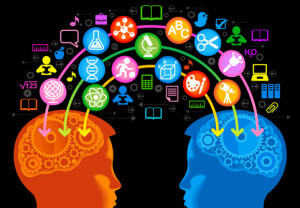Can The Blended Classroom Help Instill ‘Grit’?
Can The Blended Classroom Help Instill ‘Grit’? first appeared on Navigator by Compass Learning on April 24, 2014.
By: Kurt Bauer
There has been a lot of talk over the last couple of years about ‘grit’ and its place in the classroom. ‘Grit’ has more or less officially entered the lexicon of edu-speak. ‘Grit’ has been equated to perseverance or resilience, or both. As defined by psychologists, grit is “an individual’s passion for a particular long-term goal . . . coupled with a powerful motivation to achieve” that goal. For decades, these same psychologists, along with educators and others, have debated whether grit is an inherited trait or a quality that can be introduced and fostered. Putting aside the nature-versus-nurture contentiousness for a moment, let’s assume that this attribute, combining desire with stick-to-itiveness, is both worthwhile and teachable.
The idea that grit is a good thing for a student to possess is pretty hard to argue with. Plenty of studies suggest that students who set high goals and don’t become discouraged by setbacks are statistically more likely to achieve academic success than classmates who cannot articulate a goal or find it difficult to overcome failure, almost regardless of comparative levels of intelligence. The idea of grit generally appeals to our common sense as well. So how does one go about instilling grit in one’s students—or encouraging and developing the trait in students who appear to possess it?
In a traditional classroom, an educator could encourage risk-taking and create an environment that students might recognize as supportive by instituting risk-free homework grading policies; that is, credit is given for completion of practice tasks, with no final grade penalty for making mistakes. Alternately, one could give opportunities to regain score points lost to wrong answers on practice assignments, homework, or assessments by reworking missed problems or questions, encouraging students to keep trying. But if these well-worn models are at least theoretically workable, how much better might a blended learning environment be for instilling grit?
In a blended setting, where teacher-directed instruction is combined with digitally-delivered content, practice, and assessment, customizable and adaptive digital instruction systems contribute the multiple advantages of easy, student-controlled review, repetition, and reinforcement of content, student performance tracking, and mapping learning paths that precisely address student learning gaps based on results. This automation frees the teacher to serve as a coach and mentor, to encourage students to keep trying, and to use the precise data generated by the digital tools to focus his individualized efforts with each student.
But all educators are aware that simply creating, or attempting to create, a learning environment that encourages risk-taking and grants a ‘license to fail,’ seldom suddenly or magically motivates unmotivated students. Michael Horn argues that digital delivery of a mastery-oriented curriculum mitigates the gloom of failure, though, and turns the periodic, repeated discouragement of falling short into a daily, incremental opportunity for encouragement and motivation. When the student immersed in such a blended environment has the opportunity the very same day to circle back onto an analogous but not repetitive learning path and prove herself on another assessment, the looming boogeyman of test anxiety doesn’t have the chance to be quite as scary.
And what’s more likely to put grit into students—trying, learning from mistakes, trying again, and succeeding, every day, or dreading the unit test lurking out there in the murky distance?
Seems like the blended model is worth a try.




